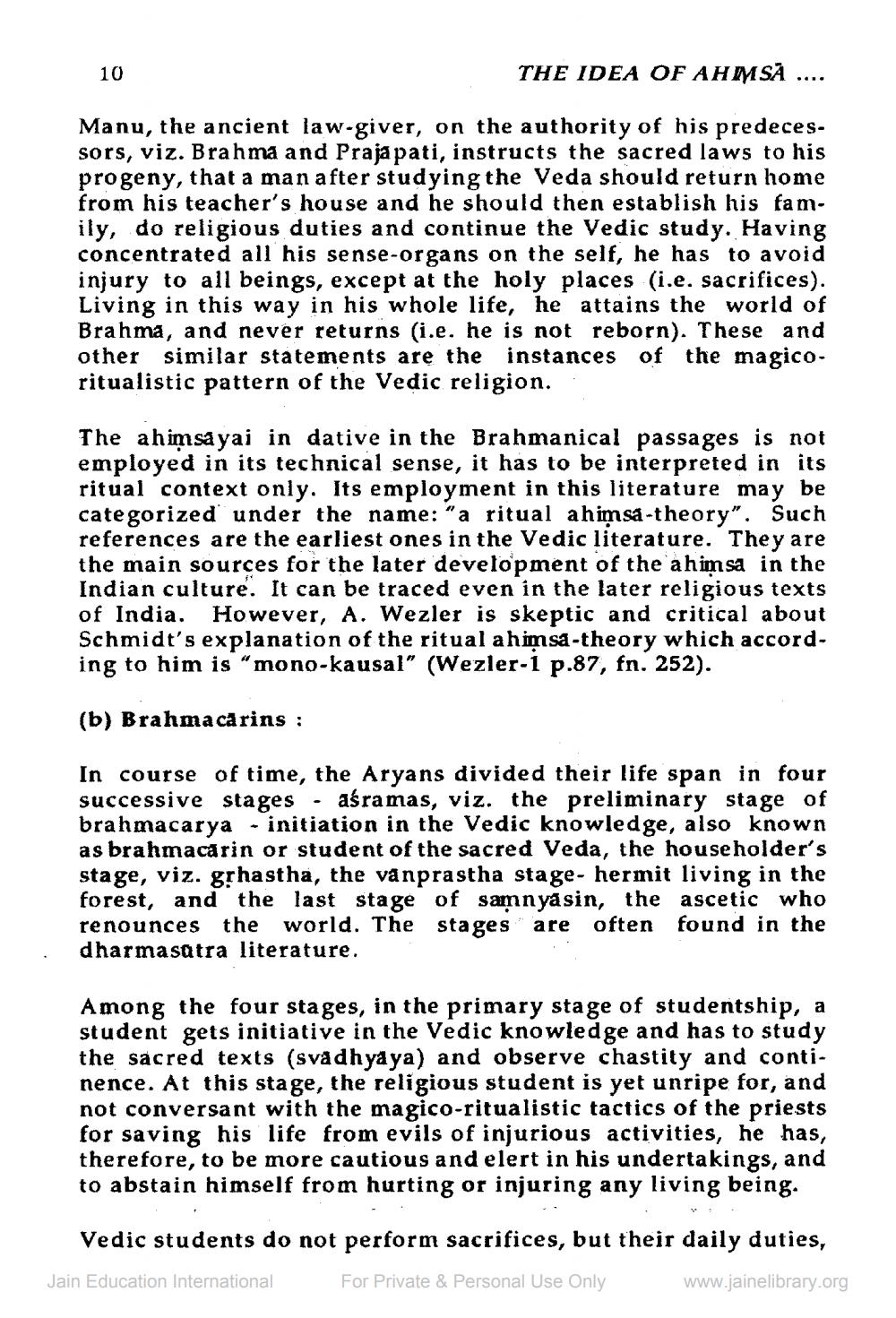________________
10
THE IDEA OF AHMSA ....
Manu, the ancient law-giver, on the authority of his predeces. sors, viz. Brahma and Praja pati, instructs the sacred laws to his progeny, that a man after studying the Veda should return home from his teacher's house and he should then establish his fam. ily, do religious duties and continue the Vedic study. Having concentrated all his sense-organs on the self, he has to avoid injury to all beings, except at the holy places (i.e. sacrifices). Living in this way in his whole life, he attains the world of Brahma, and never returns (i.e. he is not reborn). These and other similar statements are the instances of the magico. ritualistic pattern of the Vedic religion.
The ahimsa yai in dative in the Brahmanical passages is not employed in its technical sense, it has to be interpreted in its ritual context only. Its employment in this literature may be categorized under the name: "a ritual ahimsa-theory". Such references are the earliest ones in the Vedic literature. They are the main sources for the later development of the ahimsa in the Indian culture. It can be traced even in the later religious texts of India. However, A. Wezler is skeptic and critical about Schmidt's explanation of the ritual ahimsa -theory which accord
"mono-kausal" (Wezler-1 p.87, fn. 252).
(b) Brahma carins :
In course of time, the Aryans divided their life span in four successive stages - aśramas, viz. the preliminary stage of brahmacarya - initiation in the Vedic knowledge, also known as brahmacarin or student of the sacred Veda, the householder's stage, viz. grhastha, the vanprastha stage- hermit living in the forest, and the last stage of samnya sin, the ascetic who renounces the world. The stages are often found in the dharmasatra literature.
Among the four stages, in the primary stage of studentship, a student gets initiative in the Vedic knowledge and has to study the sacred texts (svadhya ya) and observe chastity and continence. At this stage, the religious student is yet unripe for, and not conversant with the magico-ritualistic tactics of the priests for saving his life from evils of injurious activities, he has, therefore, to be more cautious and elert in his undertakings, and to abstain himself from hurting or injuring any living being.
Vedic students do not perform sacrifices, but their daily duties, Jain Education International For Private & Personal Use Only www.jainelibrary.org




